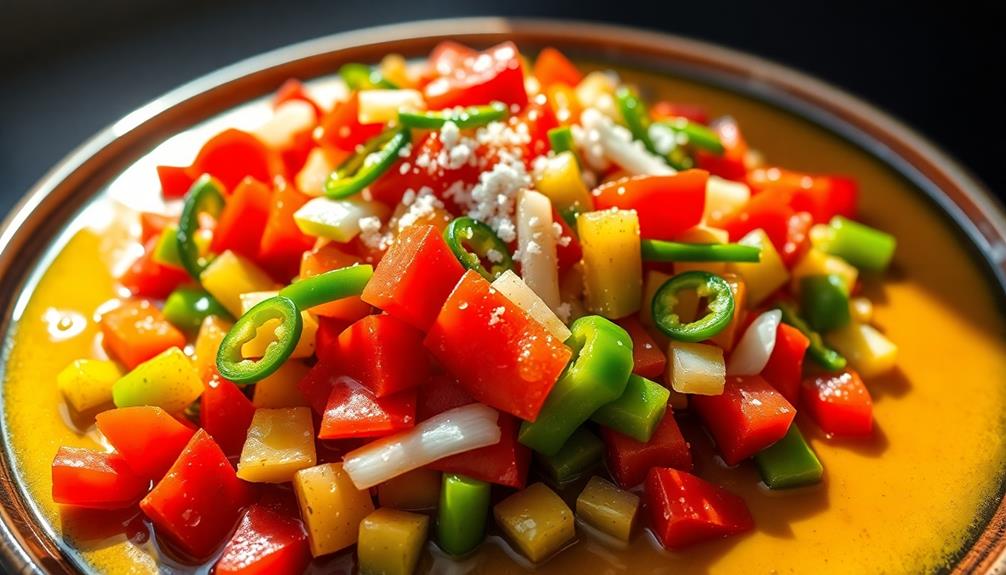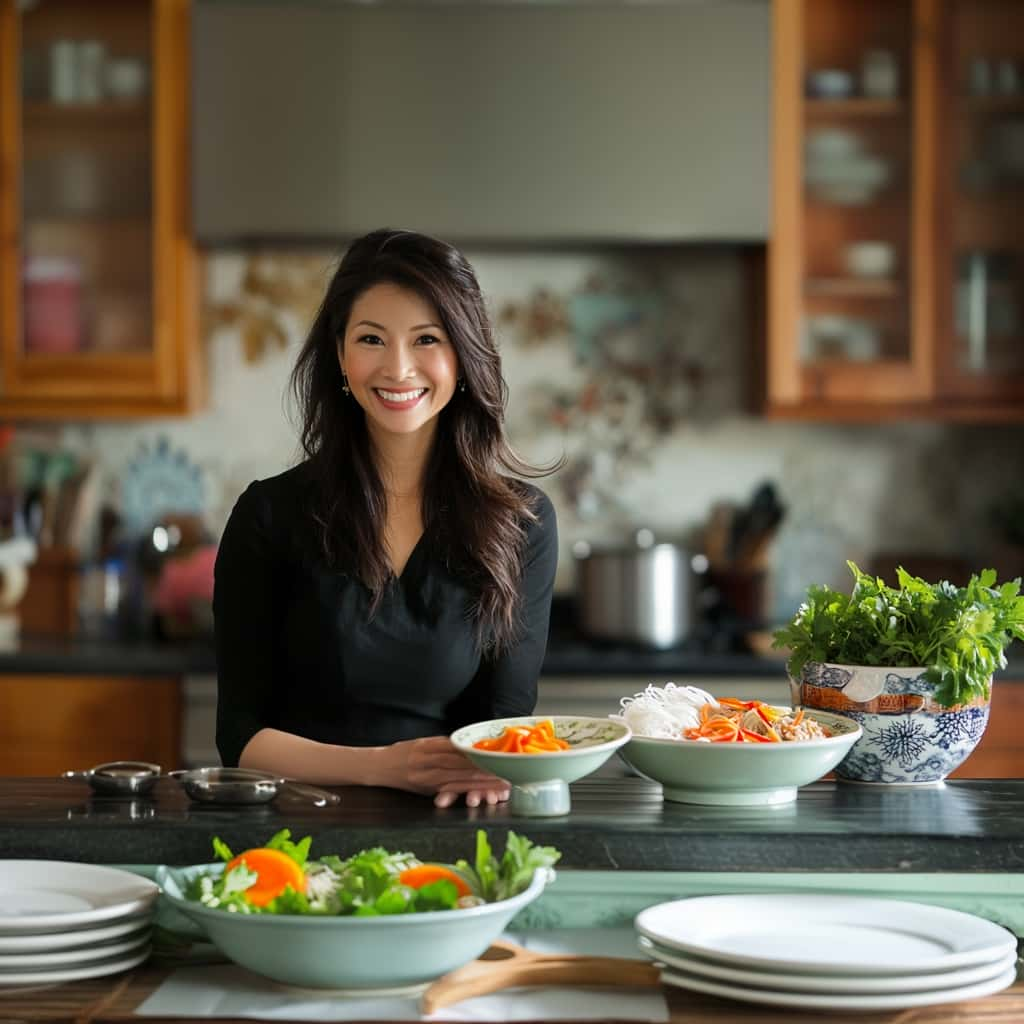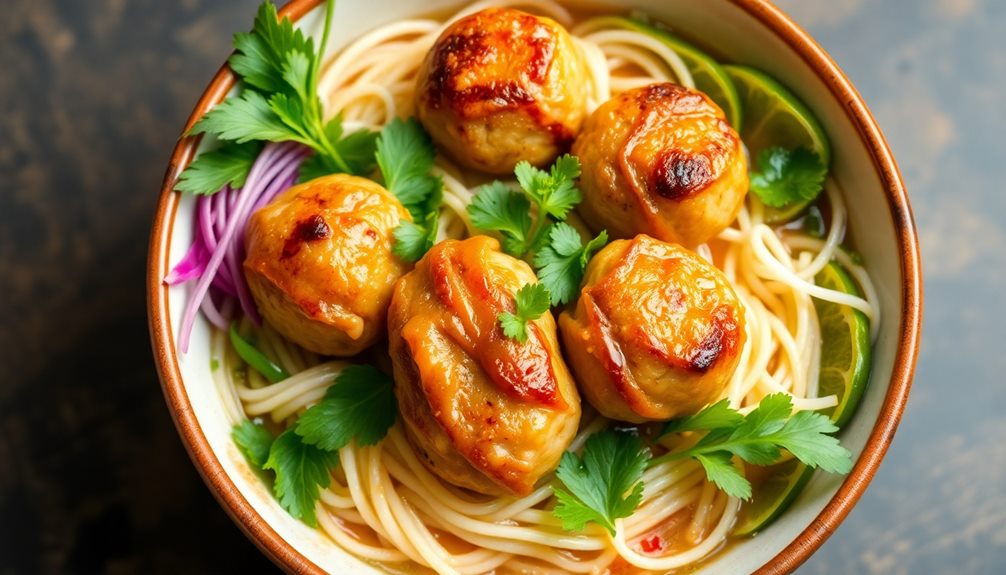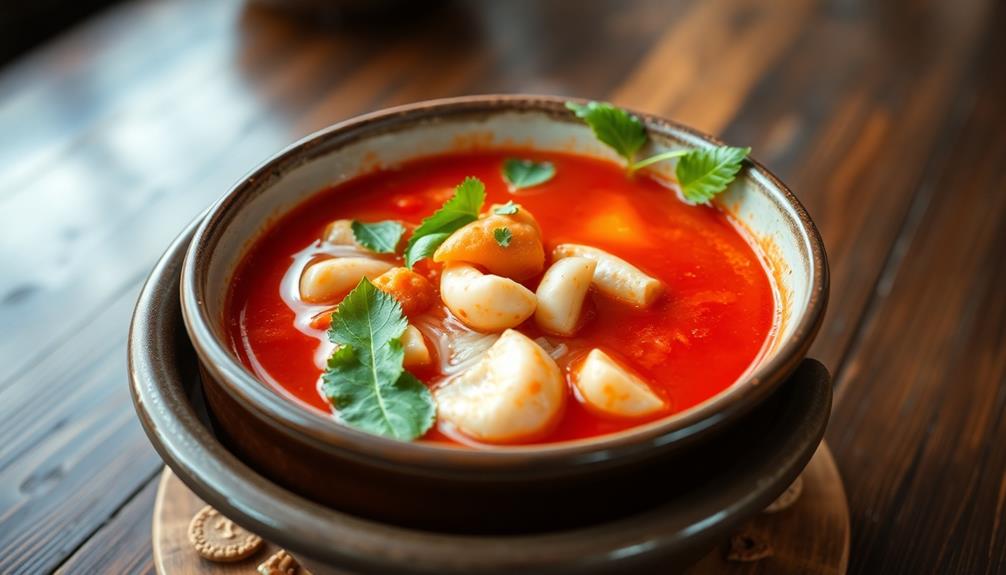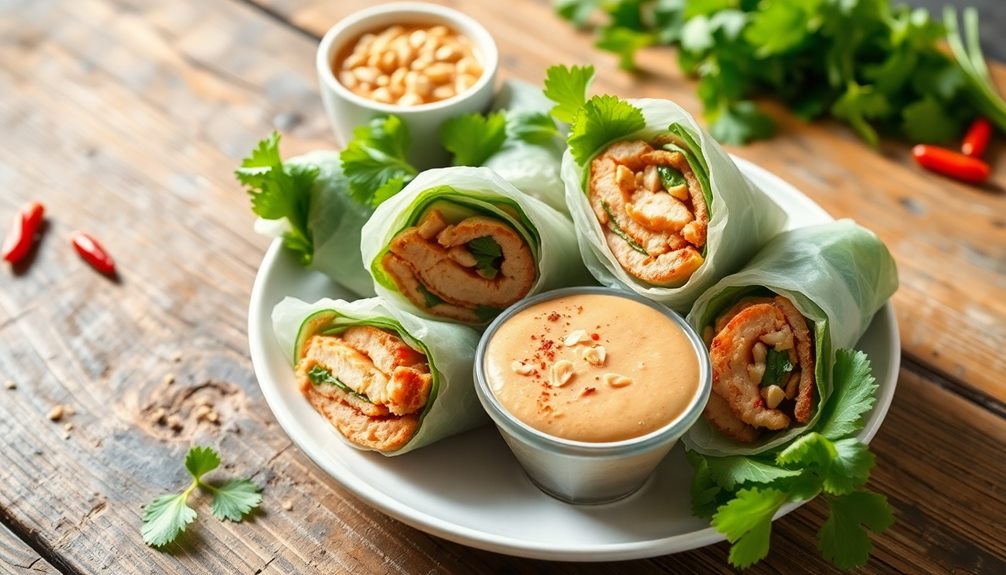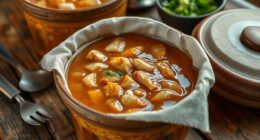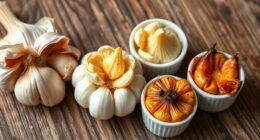Embark on a flavorful journey into the heart of Vietnamese cuisine as you master the art of creating authentic banh beo, a delicate and delightful steamed rice cake that showcases the vibrant flavors and rich culinary heritage of this captivating country. Originating from the Huế region, banh beo's name is inspired by the water ferns once found in local ponds, reflecting the balance of textures and tastes that make Vietnamese dishes so special. With its key ingredients of rice flour, tapioca starch, and savory toppings, this beloved street food and homemade delicacy offers a delicious taste of tradition. And if you keep reading, you'll discover the secrets to perfecting this iconic Vietnamese treat.
Key Takeaways
- Banh beo is a traditional Vietnamese steamed rice cake with a delicate texture, originating from the Huế region and reflecting the country's rich culinary heritage.
- The recipe involves a specific batter preparation and steaming technique to achieve the desired texture, requiring patience and practice to master.
- Common toppings include minced shrimp, pork, and scallions, while fresh herbs and a fish sauce vinaigrette can enhance the overall flavor profile.
- Serving banh beo immediately, encouraging a finger food experience, and pairing it with side dishes and dipping sauces can create a traditional and balanced dining experience.
- Continuous experimentation with flavors and presentation can lead to personal style and mastery of this Vietnamese flavor explosion.
History

According to historical accounts, banh beo originated in the central region of Vietnam, where it has long been a beloved local delicacy. This steamed rice cake is named after the "beo" (water fern) that once covered the ponds and rivers of the area. The thin, round discs are made from a simple rice flour batter, steamed in small dishes, and then topped with an array of savory and aromatic ingredients.
Traditionally, banh beo is garnished with crispy fried shallots, dried shrimp, and a drizzle of nưới chấm, the ubiquitous Vietnamese dipping sauce. The contrast of the soft, delicate cake, the crunchy toppings, and the tangy, umami-rich sauce creates a flavor explosion in every bite.
Today, banh beo remains a beloved street food and homemade delicacy, a testament to the enduring culinary traditions of central Vietnam. Whether enjoyed as a snack or as part of a larger meal, this humble dish continues to delight and inspire Vietnamese food enthusiasts around the world.
Recipe
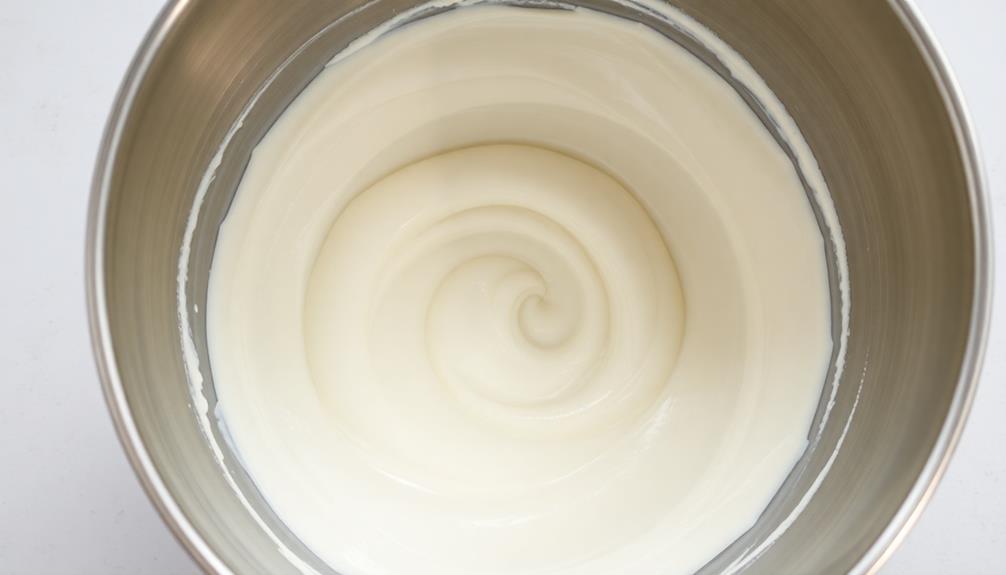
Banh Beo is a delightful Vietnamese steamed rice cake that originates from the Huế region. These delicate, bite-sized treats are known for their subtle flavor and delicate texture. Mastering the art of making banh beo at home can be a rewarding experience, allowing you to savor the authentic taste of this traditional snack.
The key to successful banh beo lies in the careful preparation of the rice batter and the precise steaming technique. With a little practice, you'll be able to create these beautiful and flavorful morsels in your own kitchen.
Ingredients:
- 1 cup rice flour
- 1/4 cup tapioca starch
- 1 cup water
- 1/2 teaspoon salt
- Topping:
- 1/2 pound ground pork
- 2 tablespoons dried shrimp, chopped
- 2 tablespoons chopped scallions
- 1 tablespoon fish sauce
- 1 teaspoon sugar
- 1/4 teaspoon ground black pepper
Instructions:
In a medium bowl, combine the rice flour, tapioca starch, water, and salt. Whisk until the batter is smooth and free of lumps. Cover and let the batter rest for 30 minutes.
Grease a banh beo steamer or a mini muffin tin with vegetable oil. Spoon about 2 tablespoons of the batter into each mold, making sure to coat the sides evenly. Steam the banh beo for 10-12 minutes, or until they're set and slightly translucent.
While the banh beo are steaming, prepare the topping. In a small bowl, mix together the ground pork, dried shrimp, scallions, fish sauce, sugar, and black pepper. Once the banh beo are cooked, top each one with a small spoonful of the pork mixture. Serve warm, garnished with additional scallions if desired.
Tips:
To ensure the perfect texture, be mindful of the resting time for the batter. Allowing it to rest for 30 minutes helps the starches fully hydrate, resulting in a smoother and more delicate banh beo.
Additionally, experiment with different toppings, such as shredded pork, dried shrimp, or even a savory egg mixture, to add your own personal touch to this traditional Vietnamese dish.
Cooking Steps
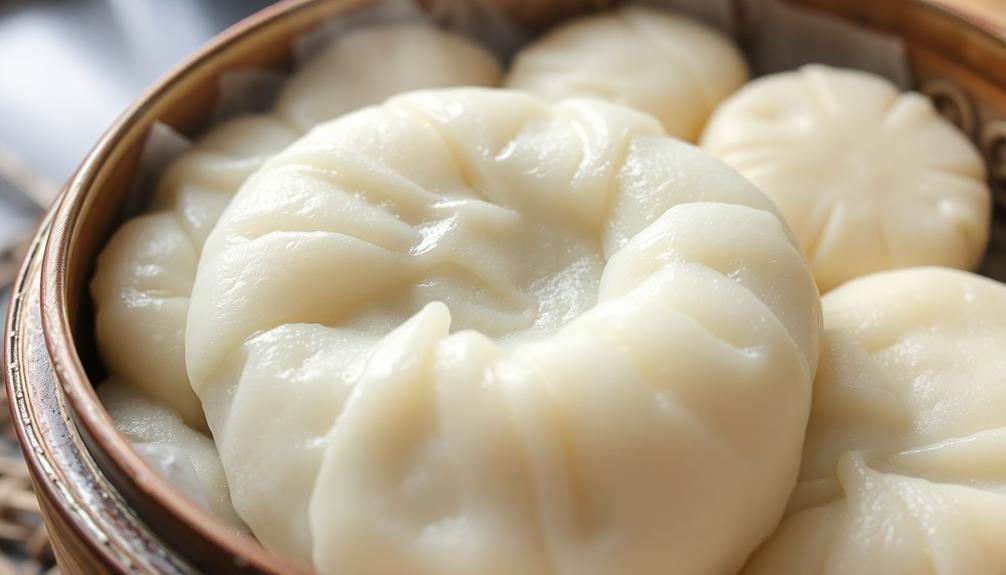
Soak the rice flour batter for a smooth, silky texture.
Next, prepare the banh beo molds to create those adorable little cups.
Then, steam the banh beo rounds until they're perfectly cooked through.
Don't forget to assemble the garnish and serve immediately, drizzling with a tasty fish sauce vinaigrette.
Step 1. Soak the Rice Flour Batter
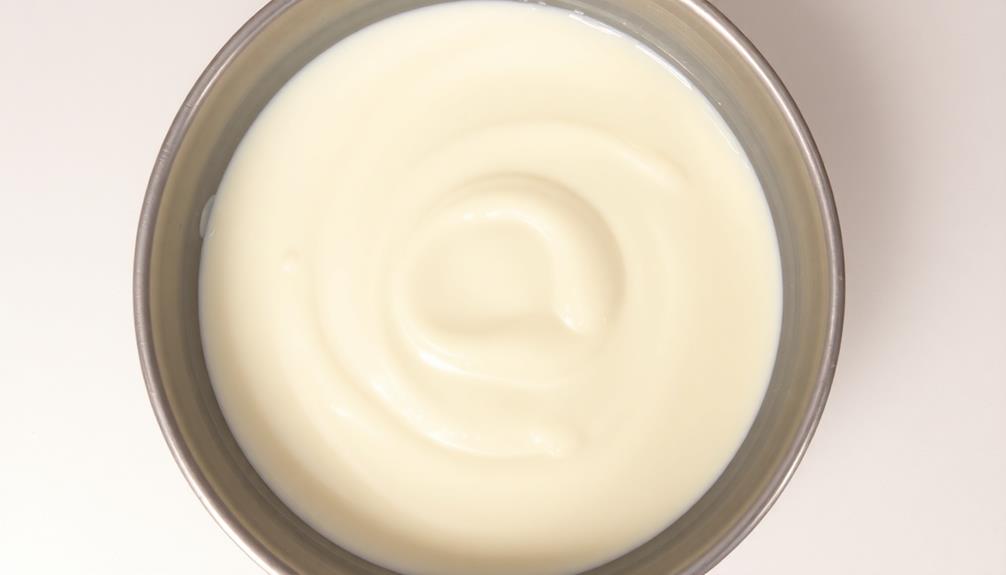
Next, you'll want to soak the rice flour batter. This is a crucial step that ensures your banh beo have a delicate, silky texture.
Start by mixing the rice flour and water in a large bowl until you have a smooth, pourable batter. Cover the bowl and let it sit for at least 30 minutes, or up to a few hours. This allows the rice flour to fully hydrate, creating a beautifully soft and supple dough.
While the batter rests, you can prepare the other ingredients. Chop up the shallots, mince the garlic, and get your toppings ready.
When the batter is ready, give it a quick stir to recombine any settled flour. Now you're all set to start cooking your banh beo! The soaked batter will make for perfectly tender, delicate little rice cakes.
Get ready for a taste of Vietnamese flavor heaven.
Step 2. Prepare the Banh Beo Molds
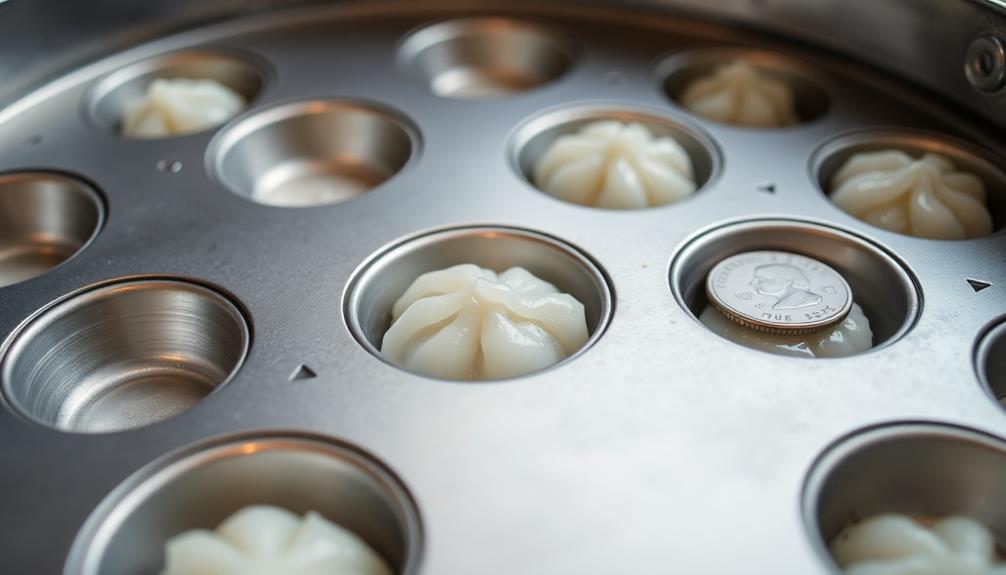
To prepare the banh beo molds, you'll first need to lightly grease them with oil or cooking spray. This will help the batter release easily once cooked.
Next, grab your favorite small, shallow ramekins or cupcake tins. These make perfect little banh beo vessels!
Carefully spoon the rice flour batter into each mold, filling them about three-quarters full. Use the back of a spoon to smooth the top and ensure an even thickness. This will help the banh beo cook evenly and develop that signature shallow bowl shape.
Now, it's time to steam the banh beo. Set up a steamer basket or pot with a few inches of water in the bottom. Gently place the filled molds in the steamer, making sure they don't touch.
Steam the banh beo for about 10-12 minutes, until they're firm and cooked through. Remove them from the heat and let them cool slightly before unmolding.
With your perfectly prepared banh beo molds, you're well on your way to creating these delightful Vietnamese treats at home!
Step 3. Steam the Banh Beo Rounds
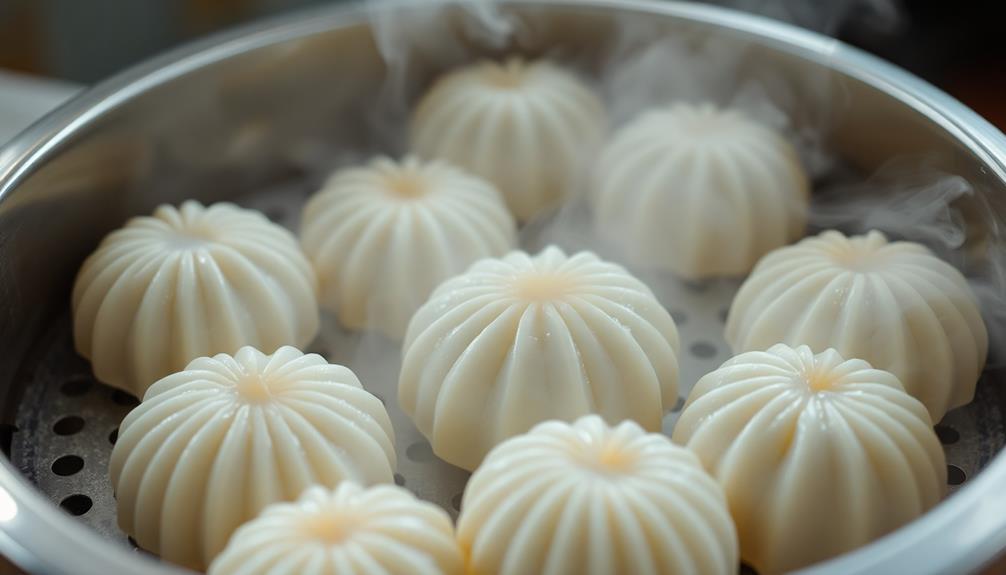
Once your banh beo molds are filled, it's time to steam the rounds. Get ready for the delightful aroma of these bite-sized treats wafting through your kitchen!
Gently place the molds into your steamer, making sure they're not touching each other. Then, cover the steamer and let the magic happen. In just 8-10 minutes, the banh beo will be perfectly cooked – plump, translucent, and oh-so-tempting.
As the timer goes off, carefully remove the molds from the steamer. Let them cool for a minute or two before gently popping out the banh beo.
Admire their delicate, gelatinous texture and the subtle flavors that have been lovingly infused. Now, the real fun begins! Drizzle each round with a bit of nuoc cham, sprinkle with crispy shallots, and finish with a few sprigs of fresh herbs.
Get ready to delight your family and friends with this authentic Vietnamese delicacy, masterfully crafted right in your own kitchen.
Step 4. Assemble Garnish and Serve Immediately
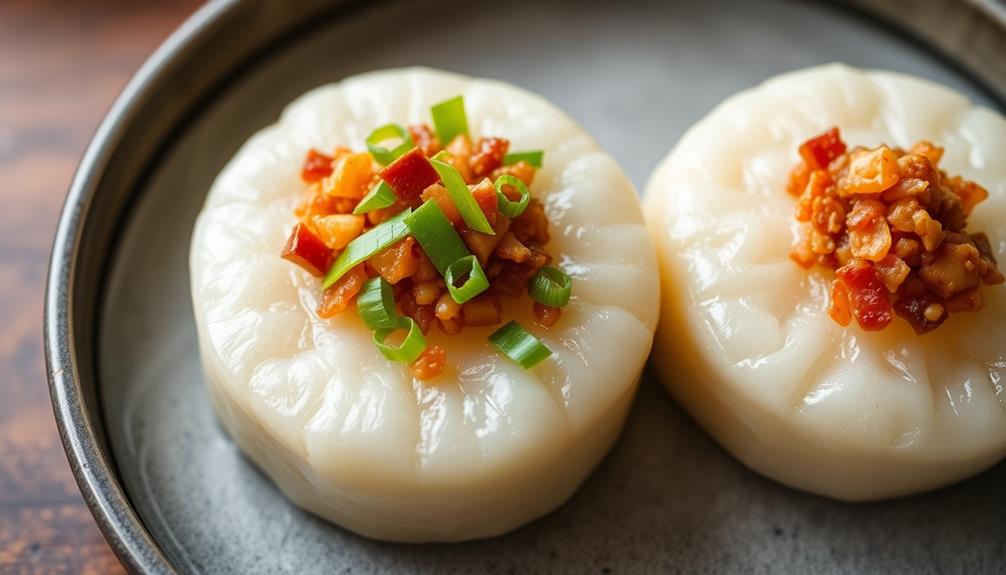
With the banh beo steamed to perfection, it's time to assemble the garnishes and serve these delectable morsels immediately.
First, gather your toppings – crispy fried shallots, savory morsels of dried shrimp, and aromatic herbs like cilantro and mint. Carefully spoon a bit of each garnish onto the surface of each steamed banh beo round, creating a colorful and flavorful display.
Next, drizzle a bit of the tangy-sweet fish sauce-based dipping sauce over the top, allowing it to gently soak into the delicate rice flour cakes. The interplay of textures and flavors is simply divine – the soft, pillowy banh beo, the crunchy shallots, the briny dried shrimp, and the bright, herbaceous notes of the garnishes.
Serve the banh beo immediately, while they're still warm and the flavors are at their peak.
Invite your family and friends to gather around and savor this authentic taste of Vietnam, bursting with umami goodness in every bite. Enjoy!
Step 5. Drizzle With Fish Sauce Vinaigrette
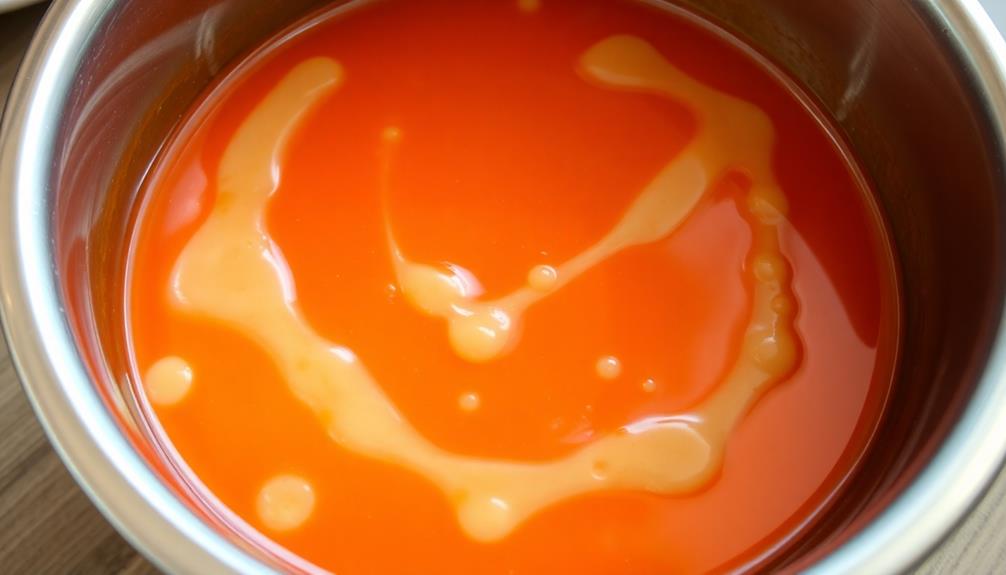
Drizzle the fish sauce vinaigrette over the steamed banh beo. This tangy, flavorful dressing completes the dish, adding a burst of Vietnamese flair.
Simply whisk together fish sauce, rice vinegar, a touch of sugar, and a pinch of pepper. The sweet-sour-salty notes dance on your tongue, perfectly balancing the delicate rice cakes.
Drizzle the vinaigrette generously, ensuring each banh beo is coated. The bright, vibrant colors of the garnishes – chopped scallions, crispy shallots, and fragrant herbs – will pop against the glistening sauce.
Serve the banh beo immediately, so the warm rice cakes soak up the luscious dressing. Encourage your guests to pick up the banh beo with their fingers, dipping and savoring each bite.
The combination of textures and flavors will transport them straight to the bustling streets of Vietnam.
Final Thoughts
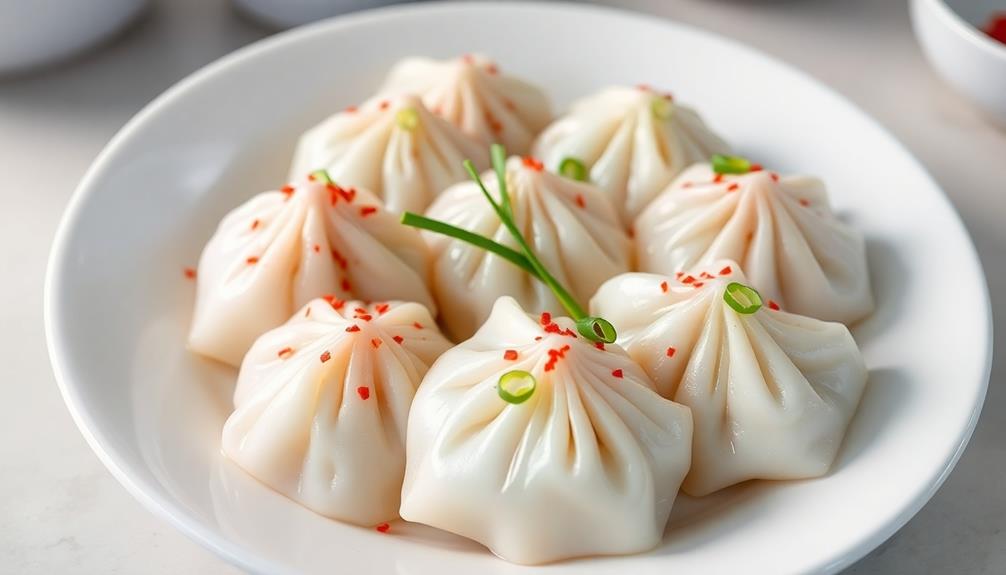
Mastering the delicate art of banh beo at home may seem daunting, but with the right techniques and a bit of patience, you can recreate this beloved Vietnamese delicacy in your own kitchen.
From perfectly steaming the rice cakes to drizzling on the flavorful fish sauce vinaigrette, each step is a chance to showcase your culinary skills and impress your family and friends.
Banh beo may be small in size, but they pack a powerful punch of flavors. The soft, pillowy texture of the rice cakes combined with the savory, tangy topping is a true delight for the senses.
As you perfect your banh beo-making technique, you'll find yourself enjoying the process as much as the final product.
Whether you're hosting a Vietnamese-themed celebration or simply craving a taste of authentic cuisine, mastering banh beo is a rewarding journey.
Embrace the challenge, experiment with different toppings, and savor the satisfaction of serving up a plate of homemade Vietnamese goodness. Don’t be afraid to get creative in the kitchen—whether you’re crafting banh mi thit nuong or assembling a fresh spring roll, each dish is a canvas for your culinary flair. The combination of sweet, savory, and tangy flavors will transport your taste buds straight to the vibrant streets of Vietnam. So, gather your ingredients, tune into your senses, and let the adventure begin!
Frequently Asked Questions
Is Banh Beo Gluten-Free or Vegan?
Banh beo can be gluten-free, but it's not inherently vegan. The dumplings are typically made with rice flour, which is gluten-free, but they often contain pork or shrimp. You'd need to modify the recipe to make it vegan.
What Is the Shelf Life of Cooked Banh Beo?
Cooked banh beo has a relatively short shelf life. It's best consumed within 2-3 days when stored in the refrigerator. After that, the delicate texture and flavors may start to degrade. Proper storage is key to enjoying this dish at its freshest.
Can I Substitute Any Ingredients in the Recipe?
You can certainly substitute some ingredients in the recipe, but be mindful that it may affect the authentic flavor and texture of the dish. Feel free to experiment, but stick closely to the core elements for best results.
How Do I Store Leftover Banh Beo?
To store leftover banh beo, place them in an airtight container in the fridge. They'll keep for up to 3 days. When ready to enjoy, reheat them gently in the microwave or steamer to soften before serving.
Is Banh Beo Considered a Traditional Vietnamese Breakfast?
Banh beo is not traditionally considered a Vietnamese breakfast dish. It's more commonly served as a snack or appetizer. You'll find it offered throughout the day in many Vietnamese restaurants and markets.

